

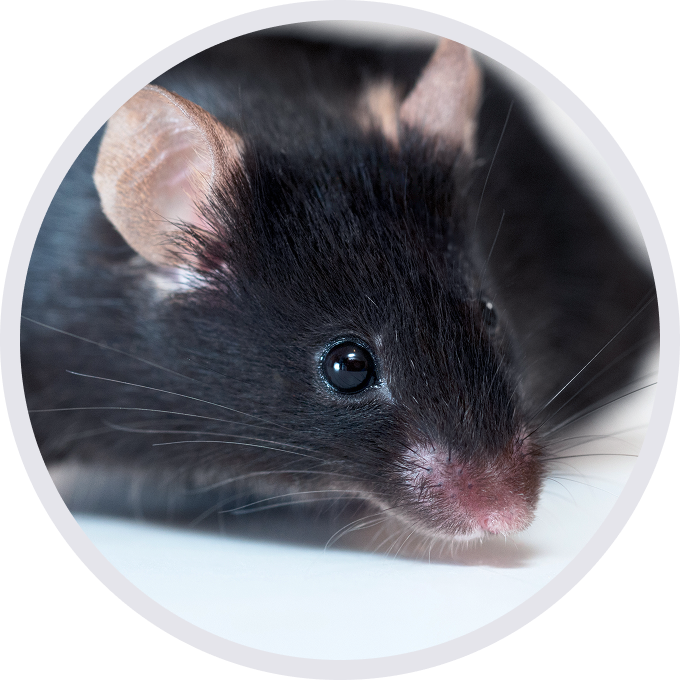
C57BL/6N-Crbntm2(CRBN)Bcgen/Bcgen • 113236
| Product name | B-hCRBN mice |
|---|---|
| Catalog number | 113236 |
| Strain name | C57BL/6N-Crbntm2(CRBN)Bcgen/Bcgen |
| Strain background | C57BL/6N |
| NCBI gene ID | 58799 |
| Aliases | 2610203G15Rik, 2900045O07Rik, piL |
Gene targeting strategy for B-hCRBN mice.
The CDS of human CRBN gene that encodes the full-length protein was inserted into the mouse Crbn exons 2-3. The B-hCRBN mice will express the human CRBN protein, while mouse Crbn will no longer be expressed.

Strain specific analysis ofCRBNmRNA expression in wild-type C57BL/6 mice and homozygous B-hCRBN mice by RT-PCR. Heart, liver, spleen, lung, kidney, small intestine, colon and cortex RNA was isolated from wild-type C57BL/6 mice (+/+) and homozygous B-hCRBN mice (H/H), then cDNA libraries were synthesized by reverse transcription, followed by PCR with mouse or humanCRBNprimers. MouseCrbnmRNA was detectable in wild-type C57BL/6 mice. HumanCRBNmRNA was detectable only in homozygous B-hCRBN mice but not in wild-type mice.
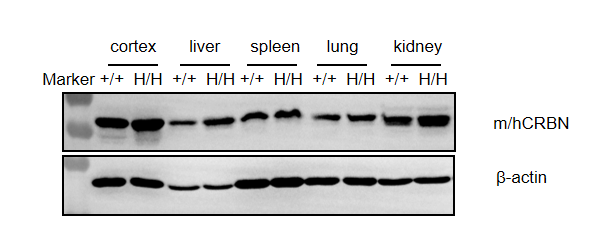
Strain specific CRBN expression analysis in homozygous B-hCRBN mice by Western blot. The cortex, liver, spleen, lung, kidney were collected from wild-type C57BL/6 mice (+/+) and homozygous B-hCRBN mice (H/H), and then analyzed by western blot with anti-CRBN antibody. CRBN were detectable in both wild-type mice and homozygous B-hCRBN mice. The anti-CRBN antibody was cross-reactive between human and mouse.
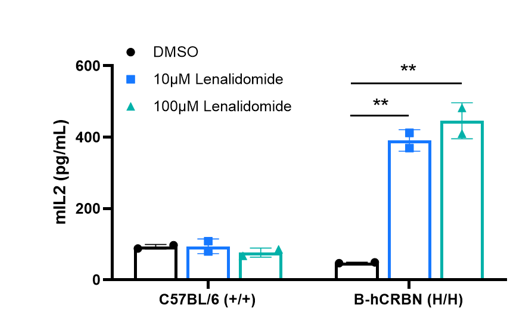
Naïve CD4+ T cells from B-hCRBN mice have increased production of IL2 when treated with Lenalidomide, but no change in cells of wild-type mice.
Naïve CD4+ T cells were collected from wild-type C57BL/6 mice (+/+) and homozygous B-hCRBN mice (H/H), then stimulated with DMSO or Lenalidomide in vitro for 24 hours. The supernatants were collected, and IL2 production was measured by ELISA. The results show that Lenalidomide significantly up-regulates the production of IL2 in B-hCRBN mice, but not in wild-type C57BL/6 mice.

Complete blood count (CBC) of C57BL/6 and B-hCRBN mice. Values are expressed as mean ± SD.
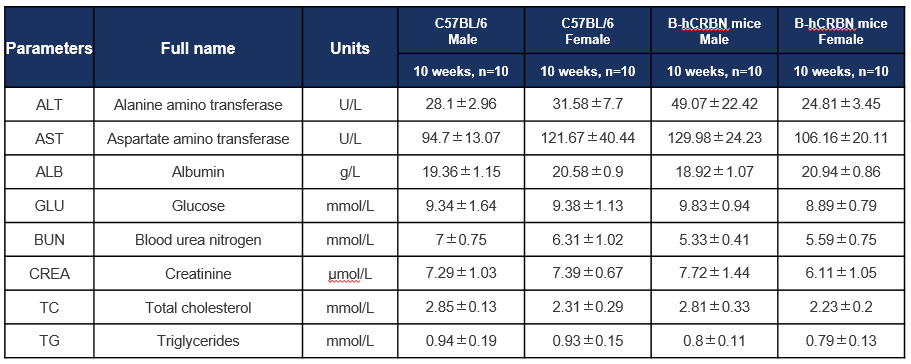
Biochemical test of C57BL/6 and B-hCRBN mice. Values are expressed as mean ± SD.

The organs of female and male C57BL/6 mice (10-week-old, n=10).
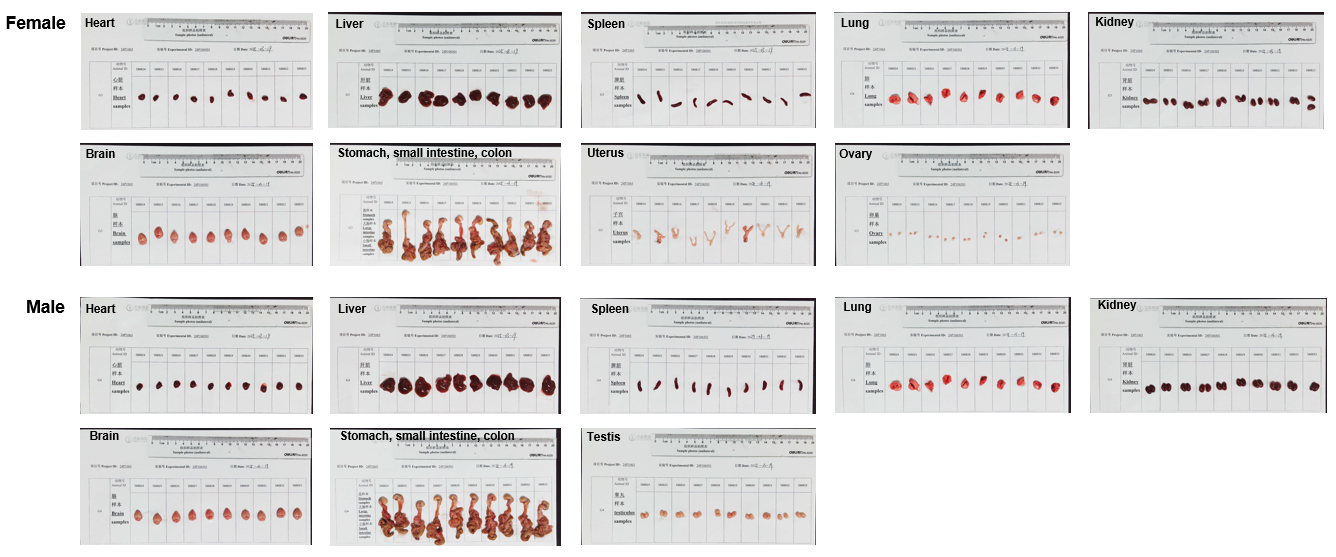
The organs of female and male B-hCRBN mice (10-week-old, n=10).
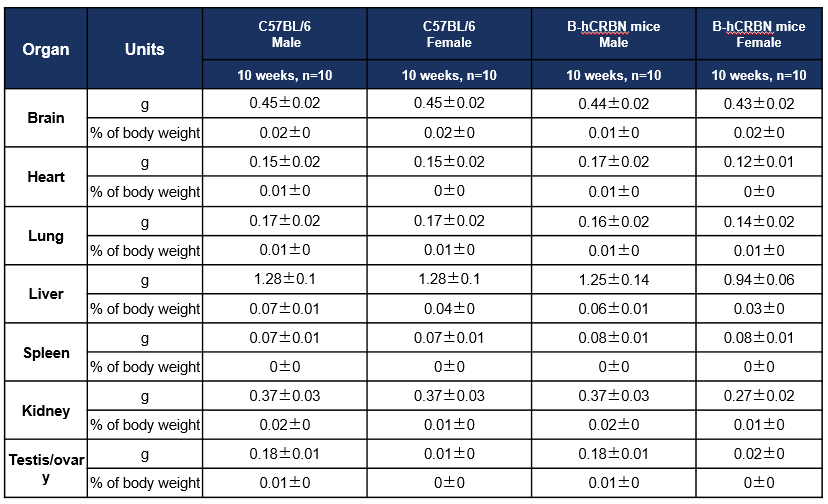
Average weight of the main organs of B-hCRBN mice. Values are expressed as mean ± SD.

Histopathological analysis of organs in C57BL/6 mice. The main organs of C57BL/6 were isolated at 10 weeks of age and analyzed with H&E staining (male, n=10; female, n=10). Results showed that no obvious abnormalities were found in all of the organs (brain, heart, lung, liver, spleen, stomach, small intestine, colon, kidney, ovary, uterus and testis). Scale bar: 100 μm.
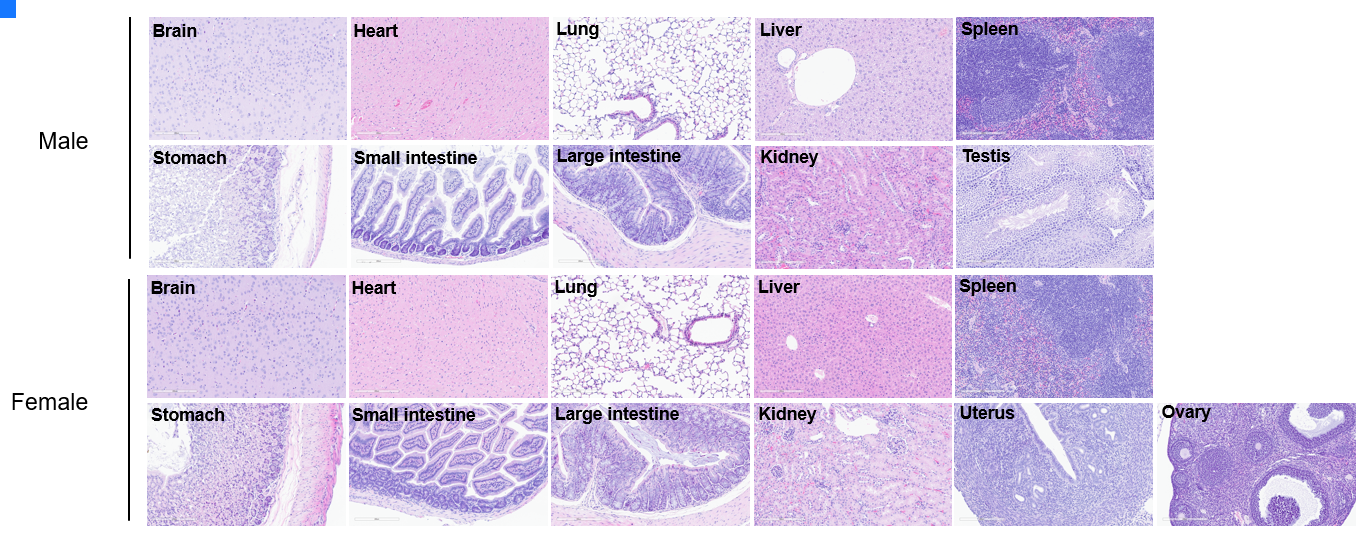
Histopathological analysis of organs in B-hCRBN mice. The main organs of B-hCRBN mice were isolated at 10 weeks of age and analyzed with H&E staining (male, n=10; female, n=10). Results showed that no obvious abnormalities were found in all of the organs (brain, heart, lung, liver, spleen, stomach, small intestine, colon, kidney, ovary, uterus and testis). Scale bar: 100 μm.